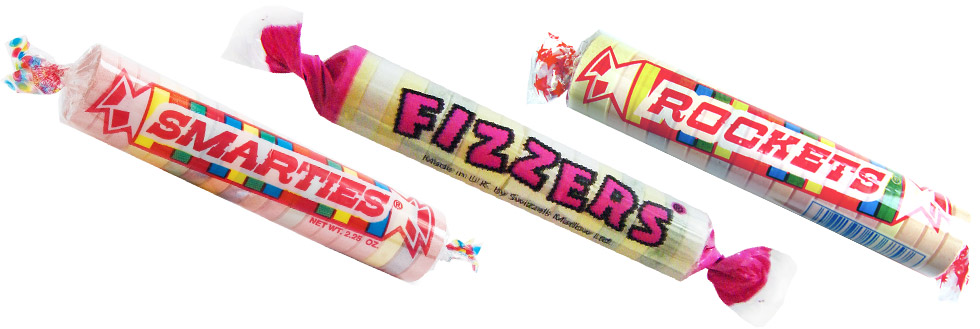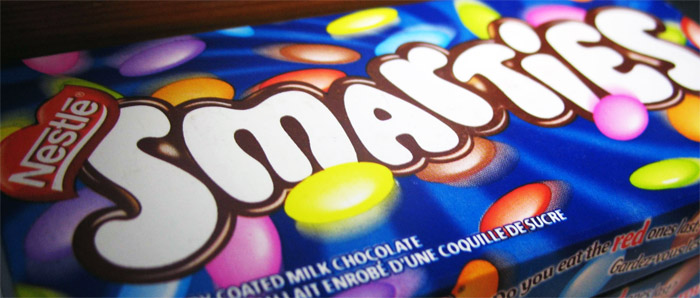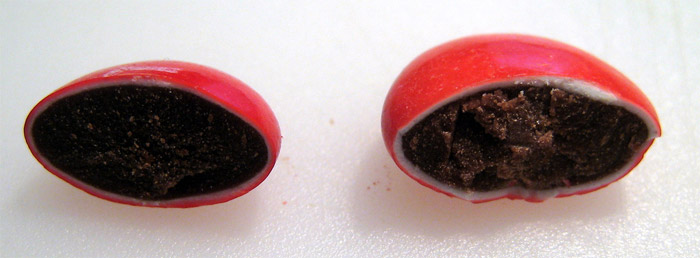Parallels: Fizzers, Rockets, and Smarties
Comments: +
October 30 2009

It’s almost Halloween and no trick-or-treat bag is complete without a twisty, colorful roll of (depending where you call home) Smarties, Fizzers, or Rockets.
Admittedly not one of my most favorites, the chalky pastel-colored candy could usually be found near the bottom of my treat bag. Weeks after Halloween they would remain next to the yellow lollipops, little boxes of raisins, and—the worst offender—the rock-hard, black-and-orange wrapped molasses candies (an oddity of growing up in Canada).
Whatever name you know them by, they are essentially the same rolled-up tablets which originated as Fizzers. The candy was first created in the 1930’s by British confectioners Swizzels Matlow (made famous for their Love Hearts) and are still sold in the United Kingdom and Australia under that name.

L-R: Smarties (Photo: J. Smith, Wikipedia), Fizzers (Photo: Retro Tuck Shop), Rockets (Photo: Danielle Scott, Flickr)
The fizzy candy first arrived in the North America in 1949 when the brother of a Swizzles Matlow partner came to the United States and started the Ce De Candy company. Smarties, as they became known in the U.S., are also manufactured and sold in Canada by the same company. But not as Smarties…
Where Smarties are not Smarties
To the rest of the world Smarties means chocolate (and depending who you ask, a more favorable Halloween treat). Similar to plain M&M’s, Nestlé Smarties were first sold in England as “Chocolate Beans” in the 1880’s before adopting the “Smarties” name in 1937. The equally colorful candy is popular in the UK, Germany, Australia, South Africa and Canada—where it’s common to eat the red ones last.


Above: Canadian Smarties packaging (Photo: pollyalida, Flickr); Below: Comparing M&Ms (left) with British Smarties (Photo: fritish, Flickr)
So, to avoid confusion (and lawsuits) Canadians have the nearly identically packaged Rockets instead—and Americans, unfortunately, miss out on the chocolate variety.
Timeless fizz
60 years after its introduction in North America, Smarties and Rockets are still instantly recognizable. With its timeless packaging and Tuscan-style slab serif type, it has gone mostly unchanged for decades… except as designer Rob Giampietro points out:
Today’s Smarties differ in one unfortunate respect: they depict the package on the package itself. Maybe it’s a symptom of our meta-obsessed times, or maybe it’s a fear of pure abstraction, but this minor graphic revision leaves the prospective Smarties consumer feeling a bit of the Dröste Effect…
In North America, Ce De Candy currently sells an astonishing 2.5 billion rolls of the candy per year—proving that kids today are still addicted.
Also see:
Filed under: branding
Comments